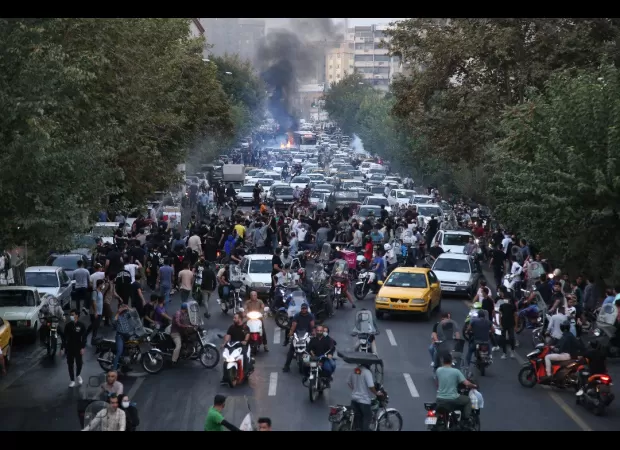Iran is executing prisoners, including a mentally disabled man, in a way that resembles the medieval times.
Critics claim that Mahsa Amini's death in 2022 has resulted in the loss of innocent lives.

In 2022, the streets of Tehran saw a wave of demonstrations as Iranian citizens protested for Mahsa Amini, who passed away while in police custody. These protests were sparked by the death of Mohammad Ghobadlou, who was among 99 prisoners executed in just one month. Ghobadlou, a man with a mental disability, was arrested in 2023 during the widespread protests that had taken over the country after Amini's death. He was convicted of murder and "corruption on earth" for allegedly running over a police officer with his car during a protest near the capital.
Human rights groups expressed concern over Ghobadlou's trial, citing allegations of torture and a lack of consideration for his mental health. Despite appeals, he was hanged in Ghezelhesar Prison in Karaj on Tuesday morning, just hours after his lawyer was notified of his fate. Along with Ghobadlou, Farhad Salimi, a Kurdish political prisoner, was also executed on the same day. Salimi had been incarcerated for 14 years and was on a hunger strike at the time of his execution.
The Hengaw Human Rights Organization reported that Salimi's family was unable to visit him before his execution, as they were only informed of it after it had taken place. He is the fourth man to be arbitrarily executed from a group of seven Kurdish Sunni men who were sentenced to death over a decade ago in an unfair trial that lasted only a few minutes and relied on torture-tainted "confessions." There are concerns that the remaining three men from the group may also face the same fate.
The death of Mahsa Amini, who died after being arrested by the morality police for not complying with the country's veiling laws, sparked the "Woman Life Freedom" movement that gained traction during the protests. This movement, along with the brutal government response to the protests, has led to the execution of at least 360 prisoners in the last three months. Human Rights Watch has also warned that at least 11 people are at imminent risk of execution, many of them from minority communities.
The Iranian regime has been using the death penalty as a tool of repression, particularly targeting ethnic minority communities. This has only fueled the anger and resistance of the Iranian people, who continue to call for fundamental reforms. The international community, including the United Nations and the European Union, has been urged to take immediate action to stop the regime's "killing machine" and save the lives of thousands of prisoners on death row.
Mahsa Amini's death and the subsequent protests have shed light on the oppressive and discriminatory policies of the Iranian government. The "Woman Life Freedom" uprising has subsided, but the fear and tension in Iranian society remain as the government uses individuals like Mohammad Ghobadlou to suppress any dissent. The upcoming legislative elections on March 1 have also added to the apprehension, as the government fears more protests and challenges to their legitimacy.






